Lesser utilized sites offer advantages
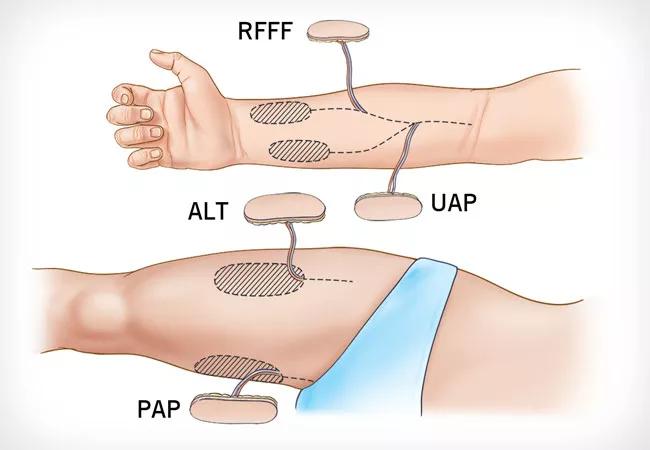
By Jamie Ku, MD
Cleveland Clinic is a non-profit academic medical center. Advertising on our site helps support our mission. We do not endorse non-Cleveland Clinic products or services. Policy
The ability to consider a range of options for free flap donor sites offers our head and neck cancer patients with complex post-extirpative facial defects the best chance for optimal functional and cosmetic outcomes while minimizing flap donor site morbidity.
Traditionally, for soft tissue free flaps, head and neck reconstructive surgeons harvest from the radial forearm or the anterolateral thigh (ALT). Indeed, these “workhorse” flaps are the best option for some patients. But for others, the lesser utilized ulnar artery perforator (UAP) flap and the posteromedial thigh, or profunda artery perforator (PAP), flap may offer greater advantages.
For certain cancer defects that require thin and pliable tissue for ideal reconstruction (such as partial glossectomy or floor of mouth reconstruction), the UAP flap allows for harvesting of similar quality tissue as the radial forearm free flap with a donor site that is more hidden so that scarring is better tolerated. The ulnar forearm skin also bears less hair than the radial side, which is desirable in head and neck reconstruction. The ulnar side can also be closed primarily when the skin is lax, avoiding the need for yet another skin graft. Even when skin grafting is needed, less tendon is exposed; this increases the likelihood of skin graft take and improved aesthetic outcomes.
There are downsides to the UAP, however. The UAP pedicle length is often shorter, so it may require vein grafts to reach the recipient blood vessels when reconstructing mid-face or temple/scalp defects. For these defects, using the angular or superficial temporal vessels as the recipient vessels can be considered.
Also, many patients are radial artery-dominant, meaning that the majority of blood flow to the hand comes from that side, which makes the UAP donor site preferable. However, for patients who are ulnar artery-dominant, the radial site may be a better option. Dominance of blood flow to the hands can be assessed with the Allen test.
Importantly, when harvesting the UAP, great care must be taken to avoid injuring the ulnar nerve. On the radial side, that’s not a concern. The UAP flap is thin and pliable with minimal donor-site morbidity; it should be considered as a first-line reconstructive option for select patients.
Thighs are also commonly used as soft tissue free flap donor sites. In general, males tend to have thinner soft tissue overlying the thigh; females tend to have thicker thigh tissue. The thigh often has advantages over the forearm for harvesting the free flap:
Decades ago, the PAP flap was used by general plastic surgeons for burn and pressure sore defects. It is starting to regain popularity for breast reconstruction, and now some head and neck reconstructive surgeons are also considering it. There are several advantages of the PAP flap over the ALT flap. Scars on the posteromedial thigh can be better concealed than on the anterolateral, and therefore are more aesthetically acceptable to patients. Tissue on the posteromedial side is more pliable and supple with less hair-bearing skin than the anterolateral thigh. The perforator anatomy is more constant and reliable, whereas up to 5 percent of patients do not have reliable ALT perforators. Finally, it is not associated with large areas of postoperative paresthesias.
In head and neck cancer defects, an example of great uses for PAP flaps is for total parotidectomy and lateral temporal bone defects, where soft tissue and volume is required to fill in what is often a large deformity in the cheek and temple. The PAP flap conforms well to that area. Others have reported excellent outcomes in glossectomy defects.
One area where I would not advocate the use the PAP flap is for complex facial reanimation and reconstruction. In such cases, where the facial nerve is removed with the cancer surgery, the free flap donor site needs to supply multiple types of tissue, including nerve, fascia lata, and muscle, in addition to skin and fat. Here, the ALT offers more versatility in the chimeric flap design.
There are many microvascular free flaps that have been shown to provide excellent reconstructive results. The UAP free flap and the PAP free flap are highly reliable and versatile flaps with minimal donor-site morbidity and are useful additions to the armamentarium of free flaps for head and neck cancer reconstruction. We should consider a broad range of free flap options to offer the best chances for optimal cosmetic and functional outcomes for each individual patient. Cleveland Clinic offers training in these alternative flaps within head and neck surgical oncology and reconstructive surgery fellowships.
Dr. Ku is a board-certified Otolaryngology-Head and Neck surgeon in Cleveland Clinic’s Head and Neck Institute. Her clinical expertise is surgical treatment of benign and malignant head and neck tumors and complex reconstruction of the head and neck.

Research on children with UHL explores the quality-of-life benefits and outcomes of cochlear implants
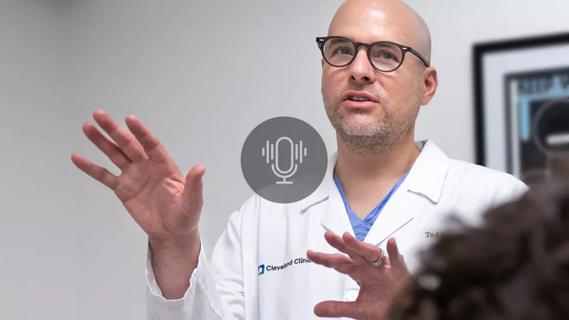
A look at how custom-fitted oral appliances work and when they’re a good fit for patients
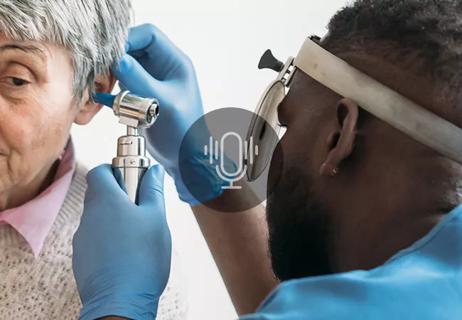
Hearing loss and its treatments are often misunderstood by both the public and healthcare professionals
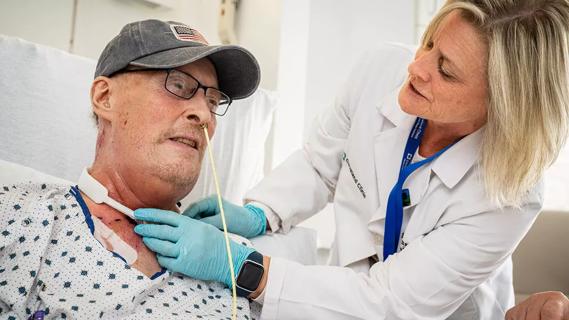
Modified Barium Swallow Study and Flexible Endoscopic Evaluation of Swallowing can both be used to diagnose dysphagia, but it’s important to understand their advantages and disadvantages
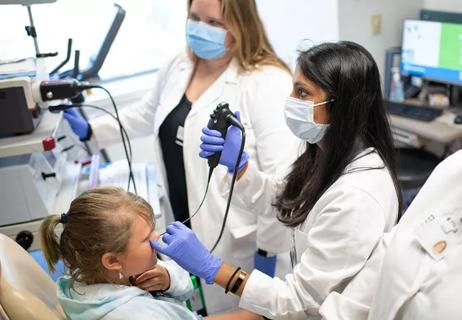
By working in tandem, a pediatric otolaryngologist and speech-language pathologist can diagnose conditions and develop treatment plans in the same visit

Because EILO is a relatively new condition, educating care providers to help diagnose and treat earlier is critical

A Cleveland Clinic speech-language pathologist describes the techniques she uses with her patients and how new research reinforces that patients should be driving care decisions

The treatment is simple and effective for many patients, but more research is needed to determine the exit-strategy from repetitive injections